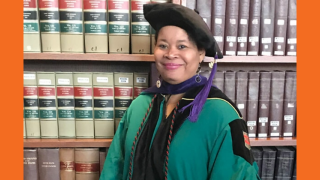Body
Chemodenervation is a treatment for spasticity that involves injections into tight muscles. This treatment is used when spasticity is severe, occurs in specific locations, and interferes with certain movements. It may include one or more injections of medicine into the affected muscles. Four botulinum toxins—Botox®, Myobloc®, Dysport®, and Xeomin®—are currently available for chemodenervation. These medications are also known by the following generic names: onabotulinumtoxinA, rimabotulinumtoxinB, abobotulinumtoxinA, and incobotulinumtoxinA.
What is botulinum toxin?
Botulinum toxin is produced by the bacteria Clostridium botulinum. This toxin causes muscle weakness and, when injected in tiny amounts into muscle, makes the muscles relax. It works by blocking the nerve from releasing acetylcholine, a chemical that normally signals the muscle to tighten.
What conditions may be helped by botulinum toxin?
Botulinum toxins have been used for many causes of spasticity, including stroke, multiple sclerosis, spinal cord injury, traumatic brain injury, and cerebral palsy. The Food and Drug Administration (FDA) has approved Botox, Dysport, and Xeomin for treating upper limb spasticity in adults, specifically at the elbow, wrist, and fingers. Botox and Dysport are approved for treating lower leg muscles in adults and for spasticity in arms and legs in children ages 2–17. Xeomin is approved for treating arm spasticity in adults and children ages 2–17, excluding those with cerebral palsy. Despite some differences in FDA approval, these medications are commonly used for both arms and legs in clinical practice, which is called “off-label” use.
Botulinum toxin injections may also treat involuntary continuous tightening or twisting of the neck or limbs, known as cervical dystonia or limb dystonia. All four botulinum toxins are FDA-approved for cervical dystonia.
How soon do injections work and how long do they last?
Muscle relaxation begins one to three days after injection. Effects are strongest at two to four weeks and wear off in about three to six months. Repeat treatments may be needed, sometimes every three months, if tightness returns and causes pain or functional problems.
How is the medicine given?
Botulinum toxins are injected directly into tight muscles. If more than one muscle is tight, multiple injections may be given. Larger muscles may require more than one injection site. To locate the correct muscle, the physician may use an EMG machine to listen to electrical activity, nerve stimulation, or ultrasound.
Does botulinum toxin interfere with other medicines?
Botulinum toxins generally do not interfere with other medicines, but some considerations include:
People taking medication for myasthenia gravis should not receive chemodenervation injections.
Those on blood thinners such as Coumadin® (warfarin) should have regular blood tests and bring results to appointments.
Medications that prevent blood clotting, such as aspirin, or arthritis pain medications like ibuprofen, can increase bleeding risk at the injection site.
What are the most common side effects?
Common side effects include pain, soreness, stiffness, slight redness, or swelling at the injection site or limb. Mild swallowing problems may occur if injections are given in the neck. People taking blood-thinning medications are more likely to have bruising or bleeding. Myobloc may cause burning during injection and can lead to dry mouth, as can other botulinum toxins to a lesser extent.
Patients who use limb tightness for function, such as wedging items between fingers or carrying objects on a flexed arm, may find these actions more difficult after treatment. Inform your doctor if you rely on tightness for these tasks.
Are there other side effects?
Rare side effects include headache, seizures in stroke patients (not more frequent than in those not receiving injections), and flu-like muscle aches.
Very rare but serious side effects require immediate medical attention:
Swallowing problems after neck injections, which may require diet changes or a feeding tube. These issues can rarely occur after limb injections and may lead to pneumonia.
Large blood clots (hematomas) requiring surgery or infection at the injection site.
Generalized muscle weakness, swallowing problems, urinary incontinence, difficulty talking or breathing, usually seen with very high doses or in patients with breathing problems.
Rash, eye problems such as drooping eyelids, double vision, blurred vision, and constipation.
References:
AbbVie. (2020, July 9). FDA approves expanded BOTOX® (onabotulinumtoxinA) label for the treatment of pediatric patients with spasticity. AbbVie News Center. https://news.abbvie.com/2020-07-09-FDA-Approves-Expanded-BOTOX-R-onabotulinumtoxinA-Label-for-the-Treatment-of-Pediatric-Patients-with-Spasticity
Ipsen. (2020, July 9). Dysport® label update press release. Ipsen. https://www.ipsen.com/websites/Ipsen_Online/wp-content/uploads/sites/9/2020/07/09221034/dysport_label_update_press_release.pdf
This content is for informational purposes only and may not be comprehensive. Information contained does not imply an endorsement from Shirley Ryan AbilityLab, and does not replace the advice of a qualified healthcare professional. See here for further details. © Shirley Ryan AbilityLab (formerly Rehabilitation Institute of Chicago). Henry B. Betts LIFE Center – (312) 238-5433 – https://www.sralab.org/lifecenter.



